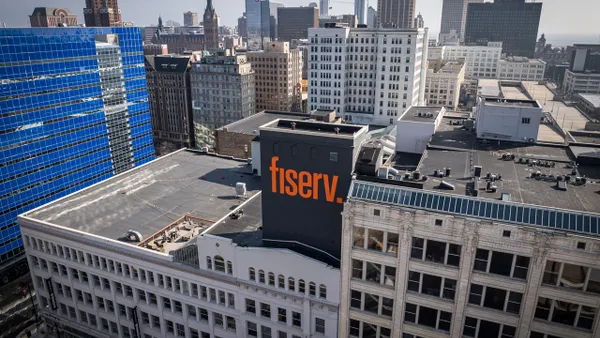Financial connectivity fintech Atomic has raised $10 million to further the innovation of its bill management tools, the Utah-based firm announced Tuesday.
For Atomic, which helps eight of the top 10 financial institutions enable payroll connectivity, payment switching and bill management, account primacy is the name of the game.
“When we talk about who is the most profitable customer for a financial institution, it’s the ones that have the deepest relationship with them,” Atomic co-founder Jordan Wright said in an interview with Banking Dive. “Direct deposit is there, their payments originate from there, the consumer logs into that account on a daily basis.”
Atomic’s connectivity tools do just that, according to Wright, who said a 20% lift in deposits is not uncommon for banks that utilize Atomic.
For consumers, it makes the banking relationship more of “a value-based relationship, [rather than] a stuck relation,” he said.
“When we started [Atomic], our mission was to help the most financially vulnerable. Our mission is now to champion upward financial mobility, and when you're stuck in a banking relationship, that does not lead to a great financial outcome for most consumers,” Wright said.
Investors who believe in that mission have given Wright’s team $78 million since Atomic’s launch in 2019. The newly announced $10 million comes from Capital One Ventures, Citi Ventures and F.N.B. Corp., who join the firm’s previous investors Greylock, Mercato Partners, Portage Ventures, ATX Venture Partners and Core Innovation Capital.
Citi Ventures was originally drawn to Wright’s vision and Atomic’s product functionality, explained Director Jeff Flynn in an interview.
“What put us over the edge was that he started to show very promising traction, winning of new customers, expansion with existing customers and product expansion. We felt the business was at a pretty exciting inflection point,” Flynn said.
Payroll connectivity, Flynn explained, is compelling because it’s “arguably the beginning of the consumer’s financial journey … maybe more appropriately, the money becomes theirs when they get paid.”
“Payroll connectivity felt like a pretty interesting wedge into the consumer journey, and an important part of where banks should be placing themselves if they want to be a primary bank account or financial provider,” he said.
As Atomic has differentiated itself from competition, Citi Ventures saw fit to invest, Flynn said.
The most exciting part of the investment, according to Wright, isn’t the money – he wasn’t trying to fundraise at the time.
“I thought we were doing just fine without it. For me, the biggest thing about this is that they're saying, ‘we think this is such a big opportunity that we want to be on the cap table,’,” he said.
Still, Wright has plans for the money, specifically growing Atomic’s bill management capabilities.
“What bill pay was in the ‘90s and early 2000s, we want bill management to be in 2025 and beyond – which is to transform how people interact with companies that they owe money, with how they pay them, with how that data is synced with the bank,” Wright said.
One such possibility, he said, is the consumer being able to cancel recurring subscriptions like Netflix and Hulu without ever having to leave their bank’s app. A bank’s app should be “mission control” for a consumer’s financial life, he said, crediting co-founder Scott Weinert for the phrasing.
“I shouldn't have to leave the app to do the things that I need for my financial life,” Wright said. “We're bringing the Netflix connection, we're bringing the Amazon connection, we're bringing all those things into the financial app, so if I see a transaction that doesn't look right to me, or when I want to pause or cancel subscription, I can do that right in the financial app itself.”
The number of recurring monthly transactions consumers have has been on the rise. Research firm Bango found last year that the average American has 4.5 subscriptions for which they pay $924 per year. Another survey, conducted by C+R Research, found last year that consumers’ average monthly spend on subscriptions was $219, putting average yearly spend over $2,600.
“We need to get a handle on that, and financial institutions are going to help,” Wright predicted. “If I had to place a bet, I would place a very large bet that every single top financial institution in the next five years will give consumers a way to manage their current spend.”











